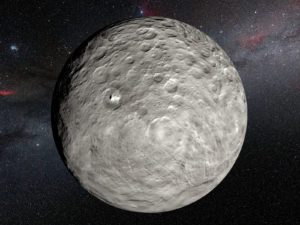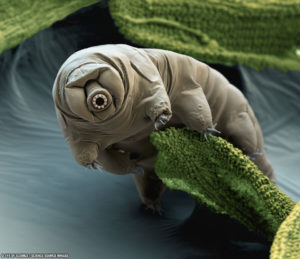10 Seconds to a Robot Miner in the Asteroid Belt Meditate
After a century of research, when NASA’s Dawn spacecraft detailed the surface of Ceres, the largest body of the Asteroid Belt, the first water-mining mission on the asteroid now arrived. Guarded in ice, in pockets below the surface, recent missions by Robots Researchers who were in Ceres prepared a complete mapping of the exploration.

But not only for this, the world watched attentively. A small group of billionaires, space tourists, watched from the main ship in an unprecedented way as the mining of Ceres.
Removing water from the asteroids of the belt was no longer new, several discussions were given on that trip of a few years, from Earth. The didactic activity was one of the strong ones in that trip, and like time almost all there turned a little specialists in the space; on unmanned trips; in asteroid mining with Robots; as well as the geology of Ceres, Vesta and other major asteroids of the belt.
They learned that at the outset of mineral exploration, including rare minerals and water itself, the best idea was to capture smaller asteroids closer to the Earth’s orbit and perform, as it were, training and mining in our own orbit. The Robotics and Artificial Intelligence built into the missions evolved to such an extent that few thought for this purpose in manned journeys, not like this case, as yet another chance to raise ample funds for operations.
Some pioneering companies at the time, today dominated the operations. Some countries and consortia between countries were the holders of technology and actions in space.
The crew tourists learned about all the mining procedures, the robotic protocols prepared for different situations, various data models made available for the actions according to each situation.
It was a safe option, and after the extraction, the water would be transported by another ship to a depot on the Moon. Thus, after a certain accumulation of large amount of water, it would then be sent to the Earth’s lower atmosphere.
With the mining, diverse equipment already was fabricated in the space. Robots specialized in construction acted together the miners to produce new Robots, new equipment, and only a smaller part would come from the Earth, regarding the volume of materials.
Anyway, the ship with the tourists landed very near the point of mining. They saw less than 500 m away, with a privileged view of their own eyes, and in addition, a circuit of cameras for the occasion gave details of the action of the mining Robot, the soil of Ceres and the space.
There, they began to realize how worthwhile it was and how it filled their dreams. Spectacular images. A camera on the Robot Miner had a dramatic effect on the scene.
Finally he came to an excavation point. Adjustments made, in a few hours he “touched” the pocket of ice.
Before vaporizing the water and capturing it, as planned, physical-chemical tests were performed on soil and ice.
The expectation for the beginning of the collection was gigantic and everyone was ecstatic. However, something really surprising and unheard of happened.

A result appeared in a small frame of recent information of the operation of the main screen of the cabin of the ship’s tourists. A small active body had been found. A microorganism similar to a Tardigrade was identified, a way of life that was suspected, could be found in protoplanets like Ceres or Vesta. This Tardigrade was somehow adapted to ice.
Life.
Another message appeared on the screen, saying: “Deciding next action” and 10 seconds passed.
At that moment, everyone thought of a series of consequences. Was our civilization for the first time giving a death sentence to a life form in space? We who have mistreated so many forms of life on the planet, are we now extending our dominion?
Those 10 seconds seemed to make everyone understand that the Excavator Robot was meditating.
A close-up of its front end, in a way, also endowed with the appearance of life. A great animal that decided what to do with another way of life.
Before so many issues to be debated with the chief scientist of the manned spacecraft, they saw the Robot announce the procedure of gradual vaporization and capture of water.
It was a magnificent sight. Some days of that scene, and everyone wanted to follow what they could. It was the grand finale of that trip.
During the extraction, the scientist was able to comment with everyone:
“Those 10 seconds of meditation that the Miner had had in fact was a thorough analysis of the characteristics of the ice found, an analysis of the microorganism found and the decision of the best way to start the vaporization procedure. It was necessary to consult our database and elaborate several models of prediction so that the action was given with the best performance. As you know there are various details of the structure of drilling, steam flow, temperature, chemical insertion, etc., for better extraction performance. This needed to be worked out for the Robot’s best decision. He waited for this data, but the process would start anyway. “
“What does not take away the spectacular moment that we witnessed. A wonderful surprise that you witnessed live. All the collected product will be brought to our ship, where we will carry out an initial microbiological research. “
Everyone then watched the final hours of the scene, before resuming the journey back. A fantastic adventure in the asteroid belt.
Main Imagem from https://www.factor-tech.com